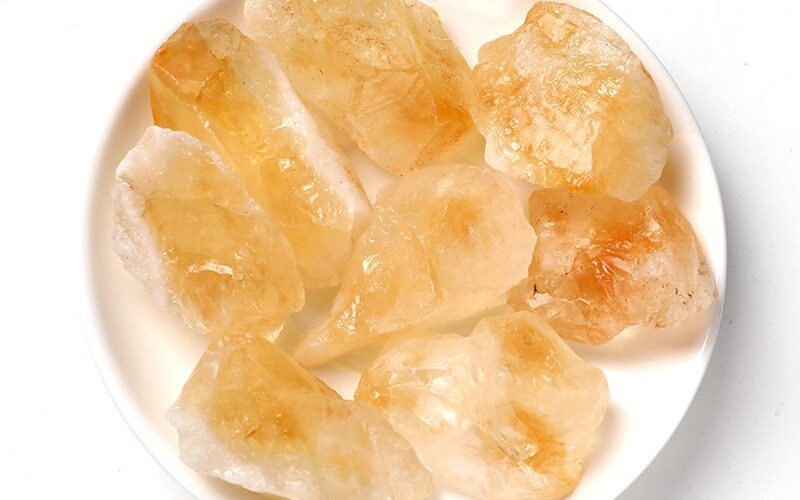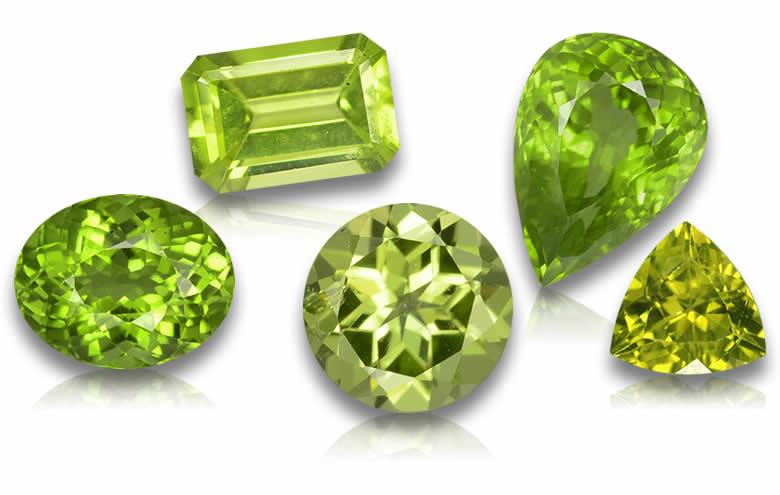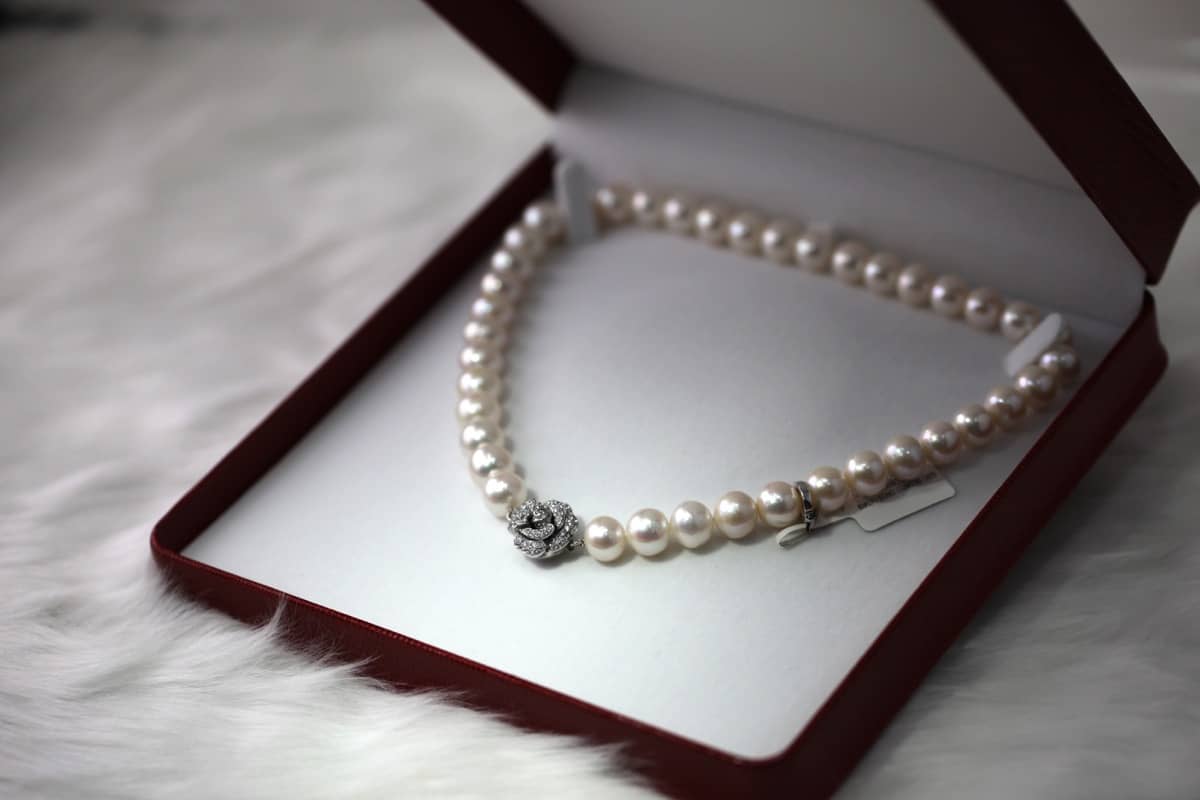Quick info about Citrine Birthstone
- Official birthstone: November
- Colors: Yellow to golden-orange
- Meaning: Success, abundance, and positive energy
- Zodiac signs: Scorpio and Sagittarius
- Mohs hardness: 7
Birthstones have long held significance and symbolism in various cultures around the world. These precious gemstones, assigned to each month of the year, are believed to possess certain qualities and bring good fortune to those who wear them.
They serve as a meaningful way to celebrate birthdays and mark special occasions. For the month of November, Citrine takes center stage as the birthstone, radiating warmth and charm with its vibrant golden hues.
Brief Overview of Birthstones and Their Significance
The concept of birthstones dates back thousands of years, with different cultures attributing specific gemstones to each month based on astrological or mystical beliefs. The practice can be traced back to ancient civilizations such as the Babylonians, who believed that wearing these stones aligned one’s energy with the cosmos.
Over time, birthstones became associated with particular virtues or qualities that were believed to enhance the wearer’s life. These symbolic meanings vary across cultures and traditions.
In some cases, birthstones were thought to bring good luck or protect against negative energies. They often hold spiritual or healing properties that are deeply ingrained in folklore and mythology.
Introduction to Citrine as the Birthstone for November
As autumn sets in and golden leaves blanket the Earth, it is fitting that November’s birthstone is Citrine—a gemstone known for its warm yellow tones reminiscent of sunlight. Citrine derives its name from “citron,” a French word meaning lemon due to its lemon-like coloration. Citrine is a variety of quartz crystal and is closely related to amethyst—the purple variant of quartz—both sharing similar mineral compositions but differing in color due to impurities present during their formation process.
This mesmerizing gemstone embodies joy, abundance, and positive energy. Being designated as November’s birthstone positions Citrine as a symbol for individuals born during this month—a unique connection to their identity and a personal talisman they can carry with them throughout life.
It serves as a reminder to embrace the radiance of the sun and harness its energy to bring warmth, happiness, and success into their lives. Citrine’s vibrant golden tones hold tremendous appeal for jewelry enthusiasts and gemstone collectors alike.
Its sheer beauty combined with its historical significance make it an exceptional gemstone that continues to captivate hearts and minds. In the following sections, we will delve deeper into the historical background, geological formation, symbolism, notable uses, and care tips related to Citrine – The November Birthstone.

Historical Background of Citrine
Origins and Discovery of Citrine Gemstone
Citrine, with its captivating golden hues, has a fascinating historical background that dates back thousands of years. The origin of the word “citrine” is derived from the French word “citron,” meaning lemon, which perfectly describes the gemstone’s vibrant yellow color.
The discovery of Citrine can be traced to various parts of the world, including Brazil, Spain, Madagascar, and Scotland. However, it wasn’t until the 18th century that Citrine gained recognition as a distinct gemstone.
Ancient Civilizations and Their Beliefs about Citrine
Ancient civilizations held deep beliefs about gemstones and their metaphysical properties. Citrine was no exception to this reverence. In many cultures, it was regarded as a stone symbolizing power and protection.
Ancient Egyptians revered Citrine for its association with Ra, their sun god who represented light and warmth. They believed that wearing or carrying citrine could channel Ra’s energy into their lives.
The Use of Citrine in Ancient Egyptian Culture
In ancient Egypt, Citrine held significant spiritual meaning and was often used in jewelry and talismans. It was believed to bring vitality and prosperity to those who possessed it. Egyptians adorned themselves with jewelry featuring citrines in various forms – rings, necklaces, amulets – as they believed it would bring them good fortune and ward off negativity.
The Association of Citrine with the Roman Empire
During the Roman Empire’s reign, citrine gained popularity not only for its striking appearance but also for its perceived healing properties. The Romans associated citrines with Mercury (Hermes), their messenger god associated with commerce and communication. They believed wearing citrines would enhance communication skills, attract wealth, and protect against evil spirits.
Roman citizens adorned themselves with citrine jewelry and incorporated it into their decorative arts. Throughout history, Citrine has been esteemed by different cultures for its beauty and believed properties.
Its journey from ancient Egypt to the Roman Empire showcases the gemstone’s enduring significance and allure. The convictions held by these civilizations still resonate today as citrine continues to inspire those who appreciate its radiant yellow tones and seek to harness its positive energies.

Geological Formation and Characteristics of Citrine
Explanation of how Citrine is formed in nature
Citrine, a captivating gemstone admired for its radiant yellow to golden hues, is primarily formed through a fascinating natural process involving quartz crystals. The formation of Citrine begins deep within the Earth’s crust, where there are high concentrations of silicon dioxide (SiO2), commonly known as silica. Over time, geological forces such as heat and pressure act upon these silica-rich environments, triggering the transformation of ordinary quartz crystals into vibrant Citrine.
Relation to quartz crystal formation process
Quartz crystals serve as the foundation for the creation of Citrine. Quartz itself is one of the most abundant minerals on Earth and exists in various forms, including amethyst and smoky quartz.
When amethyst undergoes intense heat treatment or exposure to radioactive elements present in its surrounding environment over an extended period, it undergoes a remarkable transformation into Citrine. This unique heating process alters the crystal’s atomic structure and imparts vibrant shades ranging from sunny yellows to warm golden tones.
Factors influencing the color variation in Citrine
The mesmerizing range of colors found in Citrine can be attributed to several factors. The primary influence is iron impurities within the crystal lattice structure. Variation in iron content during formation accounts for distinct shades seen in different specimens.
Additionally, factors such as temperature during growth and geological conditions can also impact coloration. Higher temperatures tend to produce deeper orange hues while cooler temperatures result in paler yellows.
Physical properties and unique characteristics of Citrine
Citrine possesses a variety of physical properties that contribute to its allure as a gemstone. Its crystal structure belongs to the hexagonal system, forming elongated prismatic shapes with pyramid-like terminations that enhance its brilliance. In terms of hardness, Citrine ranks 7 on the Mohs scale, showcasing its durability and resistance to scratching.
Furthermore, it exhibits excellent transparency levels, allowing light to pass through with exceptional clarity. The most remarkable characteristic of Citrine lies in its captivating yellow to golden hues.
Ranging from delicate pastels reminiscent of sunlight filtering through a gentle mist to intense tones that evoke the warmth of a radiant sunbeam, these colors are truly unique to Citrine. Its warm and vibrant appearance makes it a popular choice for jewelry designers and enthusiasts seeking to add a touch of sunshine and elegance to their collections.
As we delve deeper into the world of Citrine, we uncover not only its geological formation but also its mesmerizing physical properties and distinctive coloration. Understanding the intricate processes that give rise to this remarkable gemstone enhances our appreciation for its allure as November’s birthstone.
Symbolism and Meanings Associated with Citrine
Cultural Significance across Different Societies
Citrine holds cultural significance in various societies and has been revered for its positive energy and symbolism. In ancient civilizations, such as Egypt, it was believed that Citrine had the power to protect against evil thoughts and bring good fortune.
The Roman Empire associated Citrine with the sun god, providing a connection between the gemstone and vitality. In more recent times, Citrine has become popular as a symbol of abundance, prosperity, and success.
Representation of Abundance, Prosperity, and Success
Citrine is often associated with abundance due to its warm golden hues reminiscent of sunlight. Its vibrant color is believed to attract wealth and success into one’s life. This gemstone is considered a powerful manifestation tool that can help individuals achieve their goals by promoting a positive mindset, fostering creativity, and enhancing personal confidence.
Connection to the Sun’s Energy in Various Belief Systems
The radiant yellow color of Citrine has long been associated with the sun’s energy across different belief systems. It is believed that wearing or carrying Citrine can infuse individuals with warmth, vitality, and positivity akin to the energy emitted by the sun.
Many cultures believe that this gemstone can uplift one’s spirit while dispelling negative energies or thoughts. It is considered an excellent stone for revitalizing one’s enthusiasm for life.
Healing Properties Attributed to Citrine
1 . Emotional Healing Abilities Citrine is highly regarded for its emotional healing abilities as it resonates with the solar plexus chakra – our center of personal power and emotions. This gemstone is thought to clear away emotional blockages and promote self-confidence while dispelling feelings of fear or negativity.
It can assist in overcoming depression, anxiety, and other emotional hardships by fostering a sense of inner strength and optimism. 2 . Chakra Alignment Benefits
Citrine is known for its ability to align and balance the chakras, especially the solar plexus chakra. By stimulating this energy center, Citrine aids in restoring harmony to one’s emotional state.
It encourages self-expression, personal power, and a healthy sense of self-worth. Additionally, Citrine’s vibrant energy can positively influence the sacral chakra by enhancing creativity and promoting emotional well-being.
Citrine holds deep symbolism across different cultures and belief systems. Its cultural significance ranges from being a symbol of prosperity and success to embodying the powerful energy of the sun.
This gemstone also possesses significant healing properties attributed to its ability to uplift emotions, clear blockages, align chakras, and promote overall well-being. Whether worn as jewelry or used in healing practices, Citrine remains a cherished gemstone that brings warmth, abundance, joy, and healing into people’s lives.

Famous Uses and Notable Examples of Citrine
Jewelry featuring citrines throughout history
Citrine has a long-standing history of being favored in the world of jewelry. From ancient civilizations to modern times, this stunning gemstone has adorned the fingers, necks, and ears of many. One notable example is its presence in royal jewelry collections.
For centuries, citrines have been cherished by royalty for their regal allure and vibrant yellow hues. The British Royal Family’s collection boasts exquisite pieces featuring citrine, including tiaras, brooches, and statement rings that have been passed down through generations.
Beyond royalty, numerous famous celebrities have also showcased the beauty of citrines on red carpets around the world. From Hollywood actresses to music icons, these individuals have embraced the elegance and glamour that citrine brings to their ensembles.
Renowned actress Emma Stone embraced a vintage-inspired look at an awards ceremony with drop earrings adorned with dazzling citrines. Similarly, singer Jennifer Lopez exuded confidence and grace in a breathtaking necklace featuring an impressive citrine pendant.
Architectural uses and decorative applications
While commonly associated with jewelry, citrine also finds its place within architecture and decorative arts due to its warm glow and unique characteristics. One notable use is its incorporation into building facades across various cultures throughout history.
Architects have employed citrine as a decorative element in sculptures or as part of facades for public buildings or private residences. The golden hues of citrine add an enchanting touch to these structures while reflecting the sun’s radiance during daylight hours.
Furthermore, interior designers often utilize the warm glow emitted by citrine when designing spaces seeking a cozy ambiance or natural lighting effects. In modern interior design trends such as bohemian or minimalist styles, incorporating natural elements like gemstones has become increasingly popular.
Citrine, with its vibrant yellow tones, offers a sense of warmth and positivity to living spaces. From citrine-infused chandeliers casting a gentle golden glow to citrine-inspired wallpaper patterns, designers have found creative ways to incorporate this gemstone’s beauty into interior design.
Citrine’s popularity extends beyond jewelry and plays a significant role in architecture and decorative arts throughout history. Its timeless allure has captivated both royalty and celebrities alike, gracing red carpets with its vibrant presence.
Moreover, architects and interior designers have embraced the warm glow of citrine to enhance the aesthetics of buildings and create inviting spaces that exude elegance and charm. Whether adorning oneself or enhancing architectural marvels, citrine continues to hold its place as a truly versatile gemstone cherished for its undeniable beauty.
Care Tips for Preserving the Beauty of Your Citrines
Proper Cleaning Techniques
To maintain the exquisite beauty of your Citrine gemstones, it is essential to clean them regularly. However, citrines require a gentle approach to prevent any damage. Avoid using harsh chemicals or abrasive cleaners that can scratch or dull the gemstone’s surface.
Instead, opt for simple cleaning methods. Start by wiping the citrine with a soft microfiber cloth to remove any dust or dirt particles.
For deeper cleaning, you can soak the stone in lukewarm soapy water for a few minutes and gently scrub it with a soft-bristle toothbrush to reach into crevices. Rinse thoroughly and dry with a clean cloth.
Protection from Heat and Sunlight
Citrine gemstones are sensitive to high temperatures and prolonged exposure to sunlight, which can cause fading and discoloration over time. To protect your precious citrines from heat damage, avoid exposing them to extreme temperatures or sudden temperature changes. It is advisable to remove your citrine jewelry before engaging in activities such as sunbathing, using hot tubs, or cooking near open flames.
Storage Considerations
Proper storage plays a crucial role in preserving the beauty of your citrine gemstones. When not wearing your jewelry pieces containing citrines, store them separately in individual soft cloth pouches or jewelry boxes with separate compartments. This prevents scratches caused by contact with other harder materials and minimizes friction damage that can occur when pieces rub against each other.
Avoid Chemical Exposure
Citrine gemstones are vulnerable to damage caused by exposure to chemicals such as household cleaners, perfumes, hairsprays, and even some cosmetics. These substances can dull the shine of your citrine stones and even cause discoloration. It is advisable to remove your citrine jewelry before applying any chemical products and to put them on only after all cosmetics and fragrances have fully dried.
Conclusion
Citrine, with its mesmerizing golden glow, is a gemstone that captivates the senses and brings warmth and joy to its wearers. By following these care tips, you can ensure that your citrine gemstones stay radiant for years to come.
The proper cleaning techniques, protection from heat and sunlight, thoughtful storage considerations, and avoiding exposure to harsh chemicals will help preserve their beauty. Remember, when you take care of your citrines, they will continue to shine brightly as symbols of abundance and prosperity in your life.





